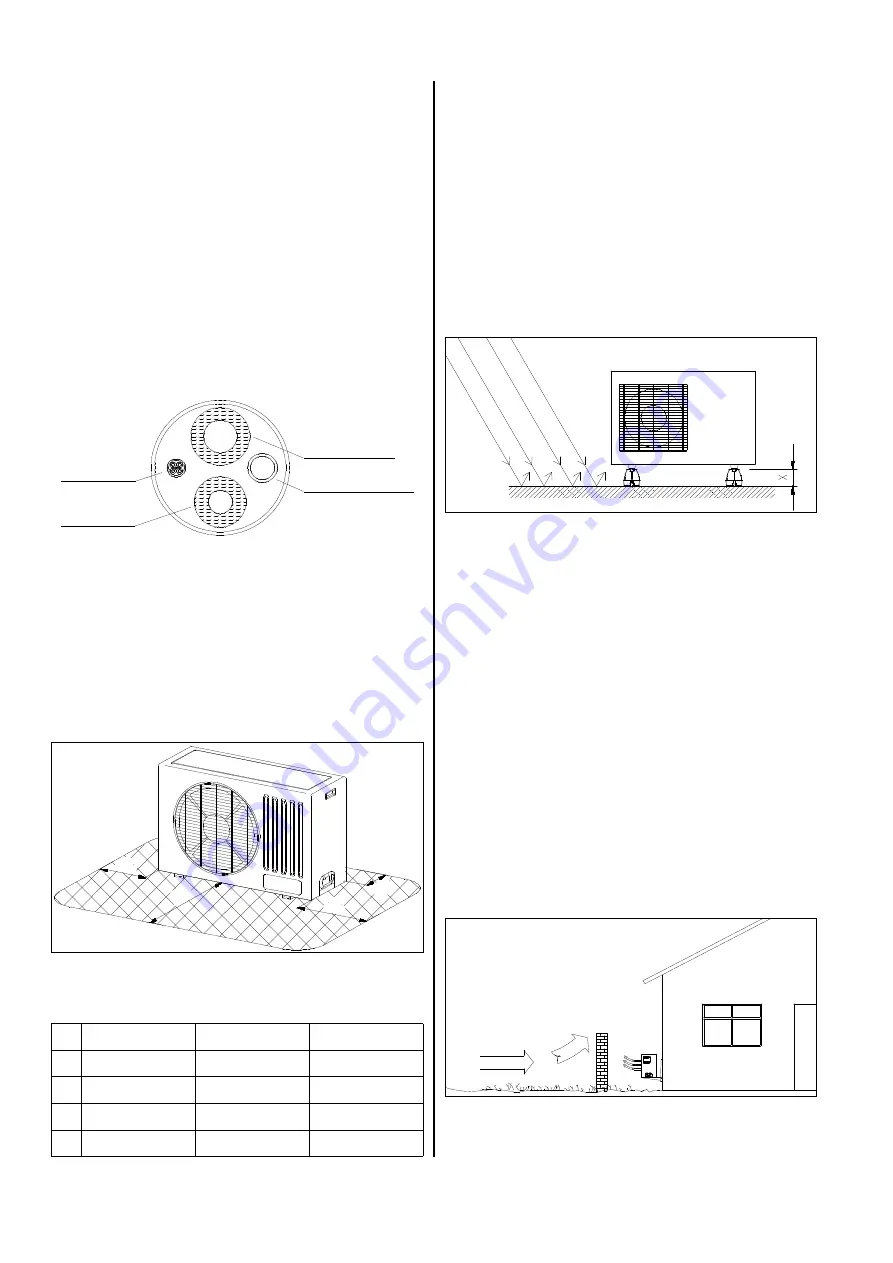
8
D
C
B
A
RKS 510
RKS 513
RKS 524
A
200 mm
200 mm
300 mm
B
700 mm
700 mm
900 mm
C
400 mm
400 mm
400 mm
D
100 mm
100 mm
200 mm
Wind
These safety zones ensure that air can flow freely in and
out of the unit, that maintenance and repair work can be
performed and to protect the unit from damage.
Minimum distances
The figure below indicate the minimum distances that
must be maintained to ensure that the units operate
properly.
Wall lead-throughs
Wall lead-throughs are necessary to establish the con-
nection between the indoor unit and the outdoor part.
Please observe the following:
◊
For the connection line to the outdoor part, a lead-
through of at least 70 mm in diameter per cold cycle
must be created.
◊
The lead-through must be placed at an incline of at
least 10 mm between the inside and outside.
◊
Before beginning work, make sure that there are no
supply lines (water, etc.) located in the vicinity of the
wall lead-through.
◊
We recommend cushioning the inside of the hole or
lining it with a PVC pipe to prevent damage to the
lines.
Control lines
Refrigerant
return line
Condensation tube
Refrigerant
supply line
◊
After assembly is complete, the wall lead-through
must be sealed with a suitable sealing compound.
Do not use any materials containing cement or lime!
Location of installation for the outdoor part
The outdoor part must be set up on a surface that is
level, smooth and solid.
The outdoor part can either be set up outside or inside a
building. If it is set up outside, follow these instructions
to protect the unit from weather conditions.
This prevents dirt and rust caused by splashing rain.
Rain:
If the outdoor part is set up on the ground or a roof,
there must be at least 10 cm ( measurement X in the
illustration below) between it and the surface.
A base console can be purchased as an accessory.
Sun:
The plate fin exchanger (condenser) on the outdoor part
is a heat-emitting component.
Direct sunlight also increases the temperature of the
plate fins and reduces the amount of heat expelled by
the plate fins exchanger.
If possible, the outdoor part should be installed on the
north side of the respective building.
A small structure should be set up to provide shade for
the unit and protect it from the sun if necessary. How-
ever, it must not be allowed to interfere with the flow of
hot air being released from the unit.
Wind:
If the outdoor part is operated primarily in windy areas,
make sure that the hot air current being released from
the outdoor part is flowing in the primary wind direction.
If this is not possible, you should provide protection from
the wind. Make sure that the wind protection does not ad-
versely affect the flow of the air to the unit.
Summary of Contents for RKS 510
Page 2: ......


































